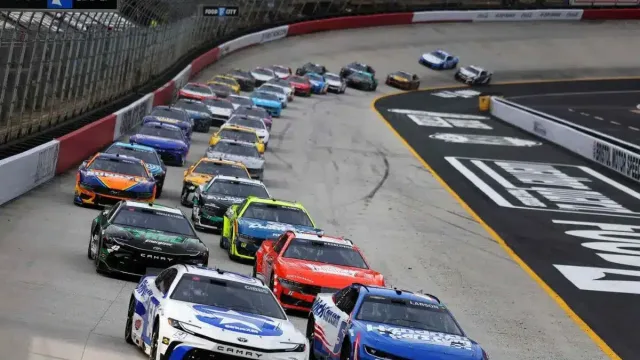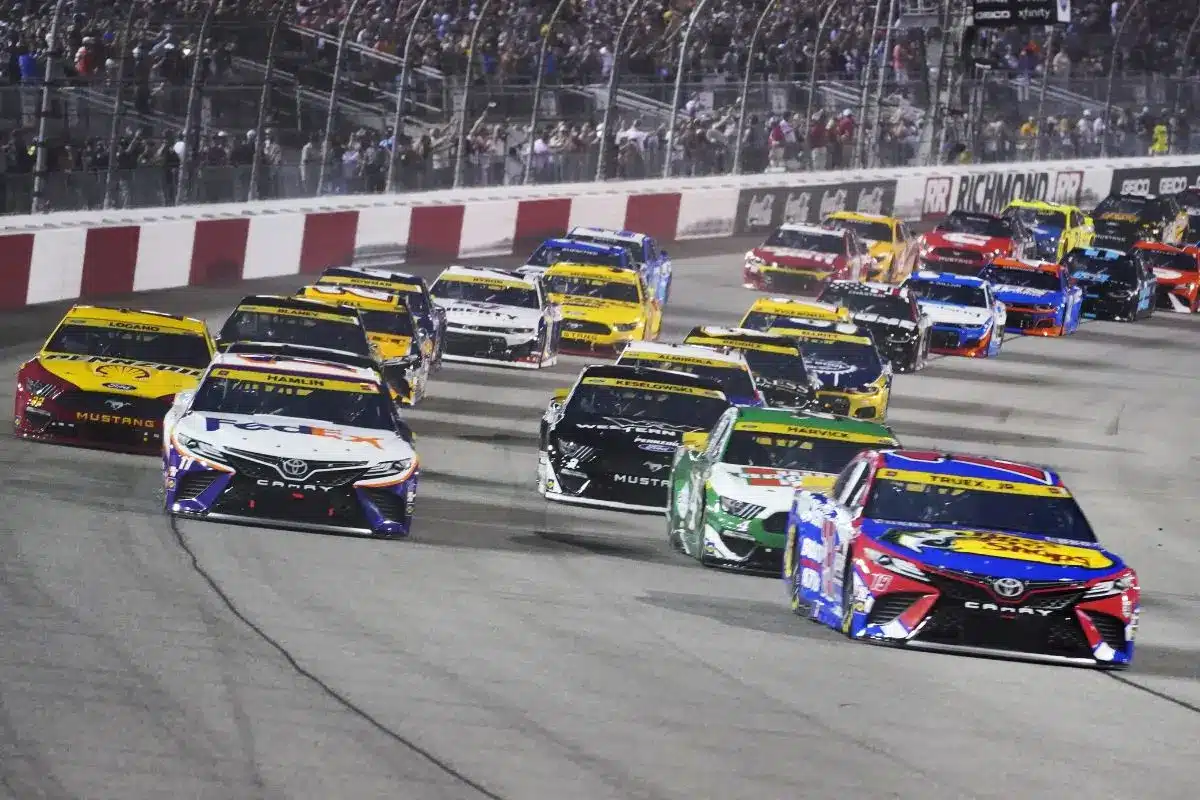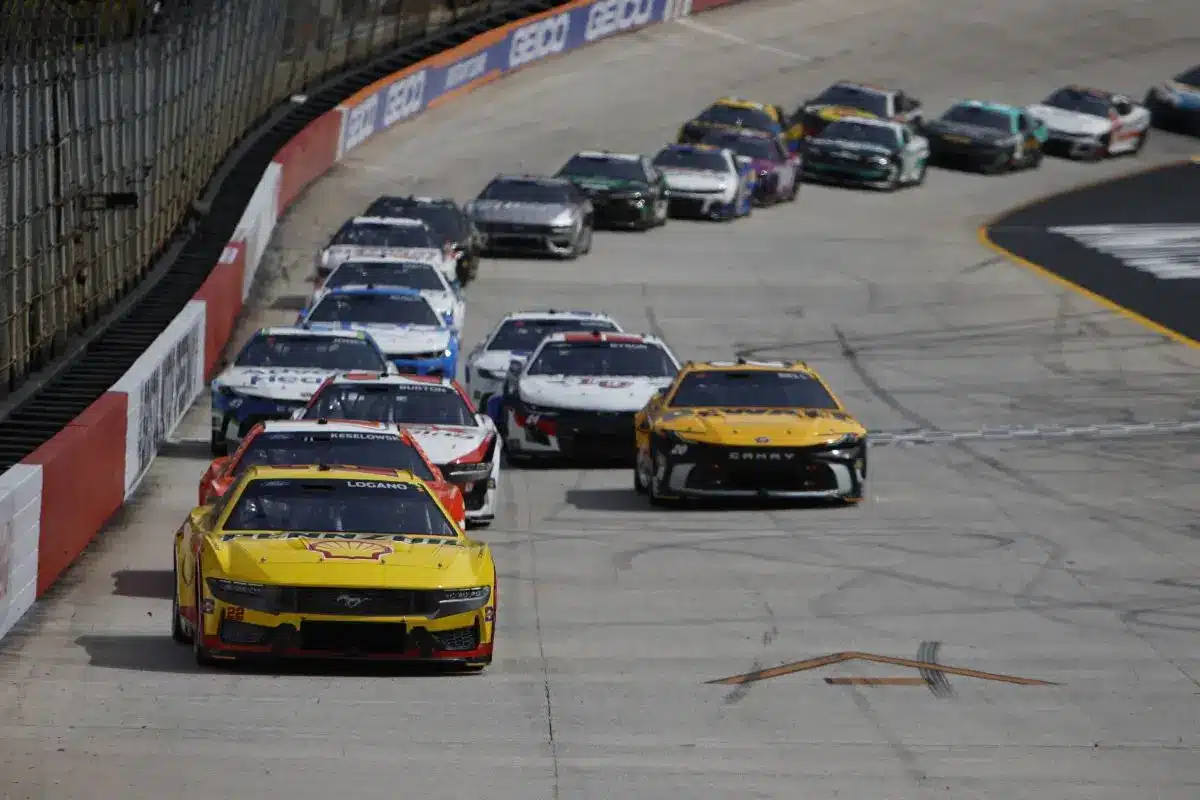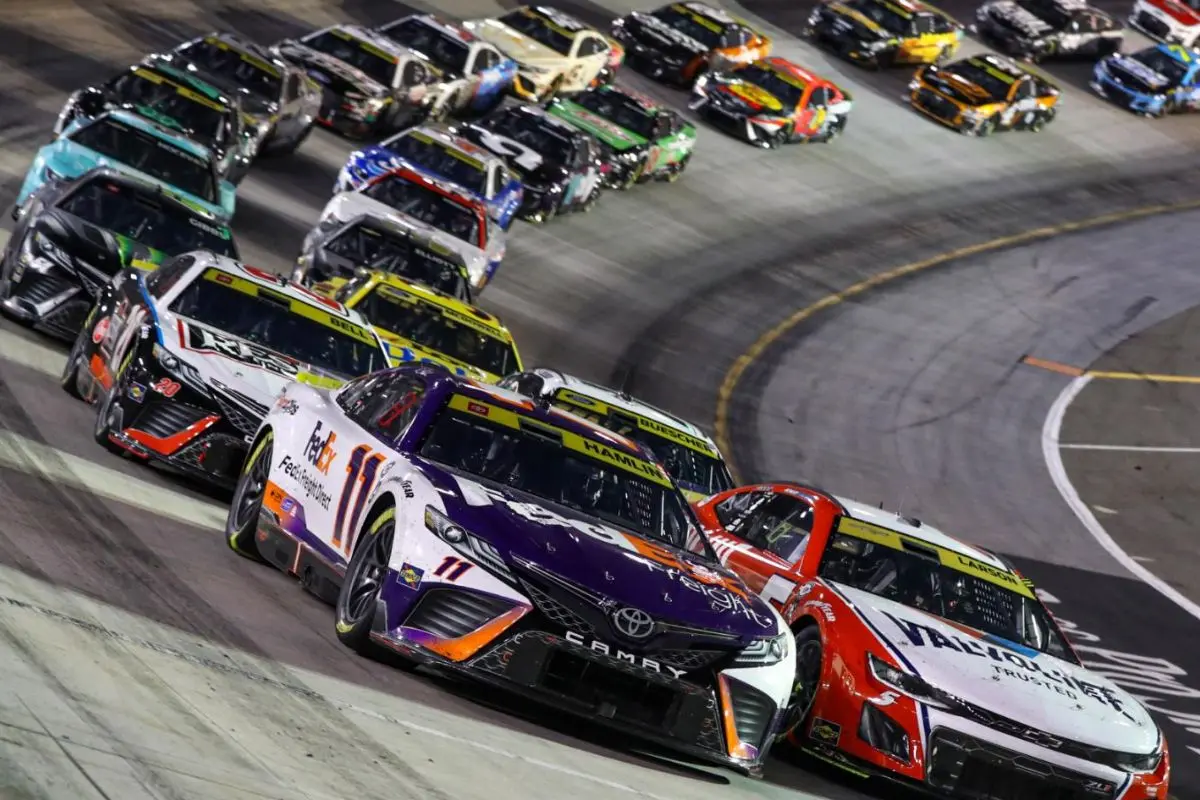NASCAR Insider Calls Out Goodyear: In recent discussions surrounding NASCAR, insider Matt Weaver has spotlighted a crucial issue: the inconsistent performance of Goodyear tires that has left teams grappling with unexpected variations in grip and wear. Despite assurances of uniform tire compounds, the discrepancies observed across different tracks suggest deeper underlying problems. Weaver points to potential influences such as fluctuating track conditions and undisclosed modifications, prompting a call for improved quality control measures from Goodyear. As this situation unfolds, the implications for team strategies and fan engagement are noteworthy, raising vital questions about accountability and the future of tire performance in the sport.
Key Highlights
- Goodyear’s tire performance varies significantly between races, raising concerns about consistency and reliability among drivers and teams.
- Discrepancies in tire wear are attributed to track conditions, weather, and potential undisclosed changes in tire compounds.
- Fans express frustration over perceived unfair advantages due to inconsistent tire performance and varying levels of grip.
- Accountability discussions highlight demands for Goodyear to take responsibility and improve communication regarding tire specifications and changes.
- Ongoing criticism emphasizes the need for Goodyear to innovate and adapt their tire engineering to meet evolving performance requirements.
Overview of Tire Issues
Analyzing the ongoing tire issues in NASCAR reveals a troubling pattern that continues to affect race outcomes and driver performance. The collaboration between NASCAR and Goodyear has come under examination once again, particularly concerning the short-track package.
The recent races at Bristol Motor Speedway were anticipated to signal a turning point for the Next Gen car; however, the reintroduction of the same tire compound that previously caused considerable tire fall-off raises critical questions about tactical foresight.
In the fall playoff race, this decision led to an unexpected scenario where drivers appeared to race without the usual apprehensions surrounding tire wear. This shift defies previous trends, suggesting a disconnect between Goodyear’s tire development and the realities of track performance.
The lack of appropriate adjustments to the tire compounds for short tracks indicates either a failure to adequately address prior issues or a misjudgment of the current racing dynamics.
Moreover, the disparity between the anticipated tire degradation and the observed performance presents a perplexing dilemma for teams and drivers alike, who rely on predictable tire behavior to strategize effectively.
As the sport evolves, understanding the intricacies of tire technology becomes increasingly crucial for success. With the stakes higher than ever, the implications of these tire issues extend beyond individual races, potentially influencing championship outcomes and the complete integrity of the competition.
Matt Weaver’s Observation
Matt Weaver’s insightful commentary on the recent tire discrepancies in NASCAR has sparked a lively discussion among fans and analysts alike.
In a thought-provoking post on his X account, Weaver highlighted an intriguing observation regarding the tires supplied by Goodyear. He noted that while Goodyear asserts that the tires used in recent races are identical to those utilized in March, there exists a “drastic level of falloff difference” between the two events. This assertion raises important questions regarding the consistency and reliability of tire performance over the racing season.
Fascinating to me that Goodyear says these are the exact same tires from March but there is just a DRASTIC level of falloff difference between these two races
You can tell me they're the same but these don't even look remotely similar
Not calling them liars. It's just WILD.
— Matt Weaver (@MattWeaverRA) September 22, 2024
“Fascinating to me that Goodyear says these are the exact same tires from March, but there is just a DRASTIC level of falloff difference between these two races. You can tell me they’re the same but these don’t even look remotely similar. Not calling them liars. It’s just WILD.” – (Weaver)
Weaver’s skepticism is rooted not in accusations of dishonesty but in an analytical evaluation of the apparent disparities. He stated, “You can tell me they’re the same but these don’t even look remotely similar. Not calling them liars. It’s just WILD.”
This perspective invites a deeper examination of the factors influencing tire degradation and performance. The variance in tire wear could be attributed to numerous elements, including track conditions, weather, and potential changes in tire compounds that Goodyear may not have fully disclosed.
Fan Reactions and Theories
A considerable number of fans have taken to social media and forums to express their thoughts on Goodyear’s tire performance, particularly in view of the contrasting outcomes observed during the spring and playoff races.
The divergent tire wear patterns have sparked a flurry of theories regarding the underlying causes, especially following Goodyear’s failed intervention for the Bristol race.
One prevailing theory suggests that the spring race caught multiple teams and drivers off-guard, resulting in a lack of effective preparation.
However, with the Next-Gen cars’ evolution, fans argue that teams should have adequately adapted their setups for the playoff race. As one fan articulated, “Tires only matter if the teams don’t know what to expect. They knew about it and set the cars up for it.”
“Tires only matter if the teams don’t know what to expect. They knew about it and set the cars up for it.” – (FANs’ REACTION)
This perspective highlights a belief that the teams possessed the knowledge to mitigate tire issues, raising questions about whether the inconsistency lies with Goodyear’s tire production.
The clear contrast in tire longevity—running approximately 60 laps in the spring compared to over 100 laps in the playoffs—has intensified examination on Goodyear’s quality control.
“If they are the same, it has to make you wary of their manufacturing standards.” – (FANs’ REACTION)
Fans are understandably wary, with comments highlighting concerns about the manufacturing standards of the tires.
This unprecedented variance in performance not only fuels discussions about Goodyear’s accountability but also reflects a broader anxiety among fans regarding the reliability of tire technology in an increasingly competitive landscape.
NASCAR and Goodyear’s Accountability
Frequently, discussions surrounding NASCAR’s racing dynamics inevitably lead to the topic of accountability, particularly regarding Goodyear’s role in tire performance. The recent events during an All-Star race exemplify this accountability crisis. After Goodyear’s bold claims about tire improvements, reality fell short, leaving fans disillusioned and frustrated. As Larson dominated the race, the lack of competition and excitement became painfully apparent, prompting harsh criticisms from the audience.
The gap between what was promised and what was delivered cannot be overstated. NASCAR and Goodyear stood ready to bask in the limelight of a successful race, yet the reality was a glaring contrast. The fans’ frustration was palpable, with sentiments echoing the sentiment, “Go ahead, call them what they are. Bunch of liars.” This lack of accountability not only affects the integrity of the sport but also deteriorates the relationship between NASCAR, Goodyear, and its fanbase. Moving forward, it is imperative for both organizations to reassess their strategies and restore trust with their stakeholders.
“Go ahead, call them what they are. Bunch of liars.” – (FANs’ REACTION)
Criticism of Goodyear and Future Considerations
The ongoing criticism of Goodyear’s tire performance has raised substantial concerns among teams, drivers, and fans alike, leading to a reevaluation of the tire company’s capabilities in the context of NASCAR’s competitive landscape. Recent discussions have highlighted a notable perception: that Goodyear may struggle to produce tires that exhibit the necessary fall-off during races. This assertion stems from the recent spring race, where unexpected tire behavior was observed, potentially influenced by the shift from a dirt track back to concrete. Critics argue that while surface changes can impact tire performance, Goodyear’s designs should inherently accommodate such variability.
Moreover, the dialogue surrounding Goodyear has ignited broader discussions about the balance of power within NASCAR. Teams and drivers have consistently voiced their desire for increased horsepower, yet this demand remains largely unaddressed by NASCAR. The crux of the issue may lie in Goodyear’s tire engineering and its ability to adapt to evolving performance requirements. If NASCAR continues to overlook the drivers’ call for improved power, it risks perpetuating a cycle of dissatisfaction that could undermine the sport’s competitiveness.
“I genuinely think that Goodyear is incapable of making a tire with fall off.”-(FANs’ REACTION)
Future considerations for Goodyear must include a thorough reassessment of tire development processes that prioritize adaptability and performance consistency. Engaging in more collaborative dialogues with teams could yield insights that improve tire design, ultimately fostering a competitive environment where both drivers and fans feel satisfied.
News in Brief: NASCAR Insider Calls Out Goodyear
The inconsistencies in Goodyear tires observed in NASCAR races underscore a vital issue impacting team performance and fan satisfaction. As highlighted by Matt Weaver, variations in grip and wear challenge the integrity of competition, necessitating a thorough investigation into the factors influencing tire behavior. Improved quality control measures and transparent communication from Goodyear are crucial to restoring trust within the NASCAR community and ensuring a level playing field for all competitors moving forward.
ALSO READ: NASCAR Insider Defends Parker Retzlaff’s Controversial Decision at Daytona: ‘Feel Bad for Him’



